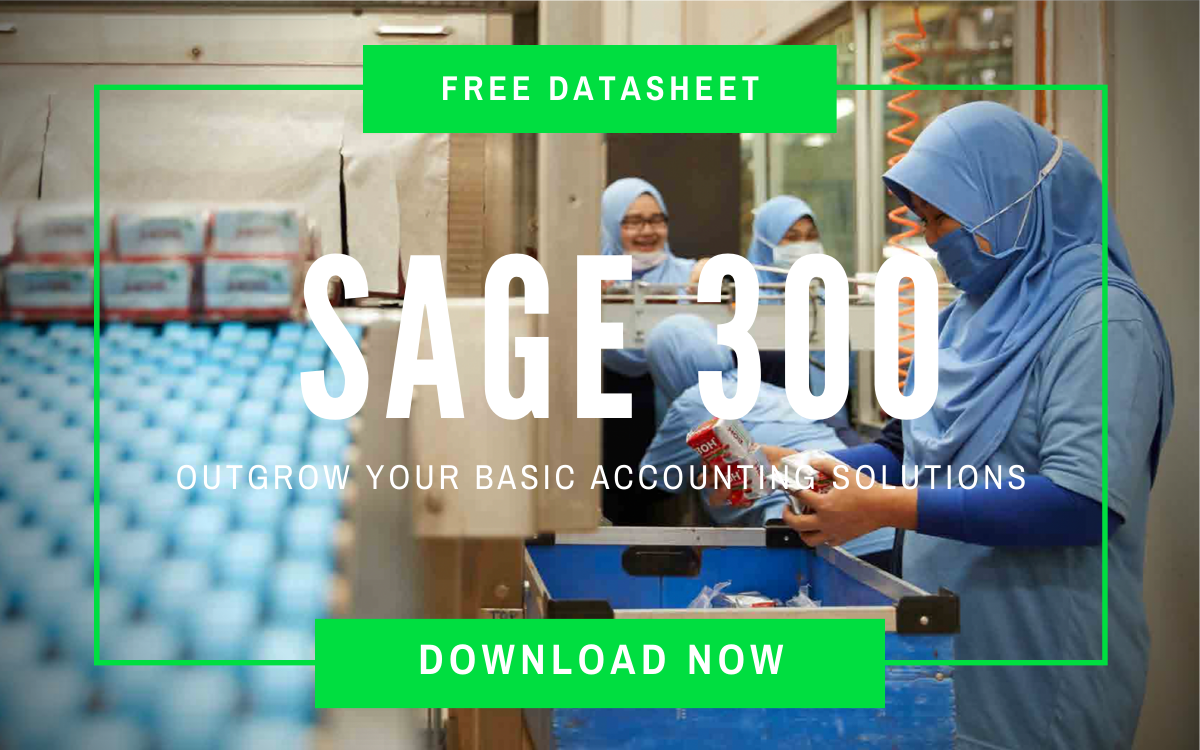Simplify GST Submission with Sage 300 and SG Tax Module; Source: Sage Asia
On 6 February 2024, Sage Singapore hosted a webinar about the new Singapore Tax Module that comes with the 2023 Product Update 4 of Sage 300. The webinar highlighted how the new module helps you generate the GST F5 form in a single click, automating the submission of your GST reporting to the Inland Revenue Authority of Singapore (IRAS).
Here are some of the highlights of the webinar.
Demo of GST Submission In Sage 300 Before The Singapore Tax Module
Demo of GST submission to IRAS before Sage 300 2023 PU4; Source: Sage Asia
The first part of the webinar consisted of a demo, which showed how a Sage 300 user would’ve had to carry out a GST submission to IRAS prior to Sage 300 2023 PU4. Then, it continued with a demonstration of how the Singapore Tax Module introduced with the update automates the GST submission process.
Without the Singapore Tax Module, a Sage 300 user would have to go to the Tax Services tab, then select Tax Reports and select the Tax Tracking Report screen. They would then have to manually select ‘Tax Reporting Currency’ in the “Print Accounts in” option, as well as the reporting period, before generating the report in an Excel file.
The Sage 300 user will then have to go to the General Ledger tab, and select G/L Reports to choose select the Transaction Listings screen. They will then be able to compare the generated tax report with the G/L account, before having to fill in all the details manually in the IRA myTax portal.
The Benefits Of Automating The Filing Of The GST F5 Form With The Singapore Tax Module
Automating GST F5 form with Singapore Tax Module; Source: Sage Asia
With the Singapore Tax Module, the Sage 300 user can select the new Singapore Tax Reports tab instead, and then choose the T/S Singapore GST F5/F8 Filing screen. Then, it’s as simple as choosing the ‘F5’ option under the GST Form Type field, and then clicking ‘Generate’ to automatically generate the F5 form for the same filing period, with most fields filled in.
With the Singapore Tax Module that comes with Sage 300 2023 PU4, users will no longer need to manually fill in the F5 form in the myTax portal, nor will they need to manually check the data against that in their general ledger before submitting it to IRAS.
This greatly reduces the risk that a user might enter a wrong figure when filling in the GST F5 form, which could cause issues for your business down the line.
-1.jpg?width=1000&height=562&name=0008%20(1)-1.jpg) Guide to filling GST F5 form; Source: The Sage Group plc.
Guide to filling GST F5 form; Source: The Sage Group plc.
The module also automatically leads the user to the SingPass login of the IRAS myTax portal, so that they don’t have to manually search for it themselves. All a Sage 300 user needs to do after generating the F5 form is to fill in the revenue of the accounting period, as well as the declarant information. Then, they will just need to click on the IRAS Submission button at the bottom right of the screen.
.jpg?width=1000&height=562&name=0010%20(1).jpg) Sage 300 will launch the browser to login screen of myTAX portal; Source: The Sage Group plc.
Sage 300 will launch the browser to login screen of myTAX portal; Source: The Sage Group plc.
This will cause Sage 300 to launch the browser, and direct the user to the SingPass login screen of the IRAS myTax Portal. After logging in, the user will have to select the UEN/Entity ID, and then the portal will prompt the user with a request for permission for the submission of the GST F5 Return and F8 Final Return forms.
Once the user has submitted their businesses’ F5 form in the myTax portal, they will be able to keep track of the submission record in the portal as well.
Q&A Session
The webinar ended with a Q&A session, where the hosts from Sage Singapore answered some questions from the attendees. We’ve curated some of these questions answers below, for your reference;
Q: Clients often send source documents less than one week before the submission due date, which causes a mad rush to finish before the dateline. How can we manage it with the Tax Module?
A: The Singapore Tax module generates data based on what you have entered in the system. As long as your clients sent source documents before the cut-off date, it will generate the F5 form.
Q: How do we carry out reconciliation between the information in the Tax Module, and the Source Journals in our General Ledger?
A: You can still refer to the information displayed in the Tax Tracking Report screen and the G/L account to reconcile the figures, and then compare this with the data in the F5 form automatically generated by the Singapore Tax Module.
Q: My organization is a GST-registered charity. Can we still use the Singapore Tax Module to submit Form 5 to IRAS online?
A: Yes, it’s possible.
Q: Does the Singapore Tax Module apply to all versions of Sage 300?
A: No, your instance of Sage 300 must be updated to at least 2023 Product Update 1 and later. Only then will you be able to use the Singapore Tax Module in your ERP software.
Q: Are we allowed to amend the figure manually if the output tax is not captured in the system?
A: Figures in the F5 form are automatically generated from data in the system and cannot be edited, so you must edit it in Sage 300 itself.
Q: For customers who import the GST paid direct to the customer, can they be generated in the Form 5 submission?
A: It depends on how you capture your transaction. If you have import GST, you attach your purchase as GST reversable. If you track your record within your AP or GL, as long as you identify to the correct item tax class, and it’s mapped to the IRAS tax code, it will be captured in Form 5 for you
Q: Once we click the IRAS submission button, will it be sent to approval? Can we save as a draft first?
A: It’s a direct submission to IRAS. However, you can generate the Form 5 on the screen in the Tax Module.
Q: If we have both a preparer and an approver, how can they both use the Tax Module?
A: The preparer will generate the Form 5 with the Singapore Tax Module in Sage 300, then log into the myTax Portal and do the submission. Then, the approver will just go into the myTax portal and do the approval after the form 5 has been submitted.
The Singapore Tax Module Makes Submitting Form 5 To IRAS Easier Than Ever
With the new Singapore Tax Module that came with the 2023 Product Update 4 for Sage 300, the GST submission process for your business has become much easier than ever.
Instead of having to manually select several options in the Tax Tracking Report screen, generating an Excel report, reconciling the figures in the report with the G/L records in Sage 300, and then manually entering the details in the IRAs myTax portal, the Singapore Tax Module automatically generates the F5 form based on the data in your Sage 300 database, which you can then submit in the myTax portal without having to manually enter data.
This greatly minimises any chance of user error in data entry, and greatly streamlines the GST submission process for your business compared to before.
To find out what else Sage 300 can do for your business, click on the image below for the fact sheet on the ERP software and what it brings to the table.




